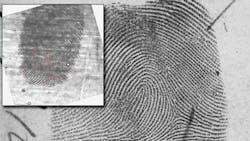Cold Case Resolutions #3: More than One Clue
I bring you this column out of my pure fascination with cold cases, forensics, police work, and all things mysterious. As an active duty Police Officer, I hold an interest in all cases especially those that bring justice to light in the end. The purpose of this column is to tell the story of how technology and forensics can play a key role in solving a case even if it has been cold for decades, giving hope to those who may be in the middle of a tough case that has lead to sleepless nights. I have been there, and have experienced the constant thought process of how a case could be solved, questioning what is missing and going over the evidence numerous times. I hope you find these cases as intriguing and motivating as I do.
Cold Case Resolutions #3: More than One Clue
October 17th, 1978. Carroll Bonnet, an employee of Clarkson Hospital, in Omaha Nebraska, failed to show up for work two days in a row. Knowing Bonnet lived alone, a friend of contacted the manager of Bonnet's apartment complex and asked him to check on his friend. After not receiving a response at the door, the manager peeked through the mail slot and observed Bonnet lying face down on the floor. Concerned for Bonnet's health, the manager called for an ambulance. The Omaha Fire Department arrived at the scene and gained entry to the apartment. Upon entry they observed Carroll Bonnet, naked, face down, with a stab wound to his torso, deceased.
The Omaha Police Department arrived and secured the scene for investigators. The normally tidy apartment was in shambles, showing clear signs of a struggle. The telephone cord had been severed, seemingly in an effort to prevent Bonnet from calling for help. Newspapers were strewn about on the floor and coffee table, and three towels sat next to the victim. A note taunting police was found near the body. It read “I am leaving this crime with only one clue. Find it yourself Pig!!! Die Pig. -Helter”. Investigators collected, the note, the towels, cigarette butts, beer cans, the newspapers, as well as fingerprints and palm prints from various locations around the apartment. However, with all the evidence collected, there was still no certainty about the “one clue” mentioned in the note. It was also discovered Bonnet's car was stolen. The car was found days later in Cicero, Illinois. Fingerprints were collected from the vehicle, with some belonging to Bonnet, and others unidentified. After processing the prints and finding no match, the case went cold.
In March of 2009, the Omaha Police Department Cold Case Unit re-evaluated the fingerprints from the Bonnet murder using the Integrated Automated Fingerprint Identification System, or IAFIS, to once again look for a match. IAFIS was launched by the FBI in 1999 and is designed to house and compare fingerprint data on a national level. Many states have their own AFIS, which are connected to the FBI's integrated system. This allows vital information to be shared between state, local, and federal agencies, greatly improving the odds of identifying offenders. As any law enforcement officer knows, a great deal of the suspects they deal with are both transient, and repeat offenders. For example, with the IAFIS system, the car thief from several states away, just released from prison and on the move, can be quickly identified when he gets up to his old tricks in your jurisdiction. This system makes paramount the collection of fingerprints, not only to solve your cases, but solve past and future crimes as well.
The decades old unidentified fingerprints were matched in IAFIS to a man named Jerry Watson and the formerly cold case was assigned to Detective Douglas Herout to follow-up on the new lead. Detective Herout had several of the collected items tested for DNA, something which wasn't an option for investigators in 1978. Detective Herout discovered Jerry Watson was serving prison time in Illinois for burglary charges. It was also uncovered Watson grew up in Cicero, lived a only a few blocks from where the stolen vehicle was found, and in the latter part of 1978, he visited a relative in Omaha. This places Watson in the proximity and time frame of the murder, however more would be needed for a conviction. Detective Herout traveled to Illinois to interview Watson in prison. Mr. Watson confessed to being in Omaha in 1978, however he denied committing the murder. Upon concluding the interview, Detective Herout obtained finger and palm prints from Watson, as well as DNA samples. Laboratory technicians were able to obtain full and partial DNA profiles from several pieces of evidence from the 1978 crime scene, and matched them to Watson. In addition to the fingerprints already matched in IAFIS, another palm print taken from the scene was matched to the palm prints taken by Detective Herout. With a mountain of evidence on their side, detectives were preparing to charge Watson for the murder, but the question remained; what was the “one clue”?
While looking through the items taken from the scene, Detective Herout noticed blue ink scribbled on one of the newspapers found near the body. The scribble was obscuring something written in cursive. Upon further examination, it became apparent the cursive writing was the signature “Jerry W.”. Now armed with what the murderer thought was the only clue the “Pigs” could find, the charges were imminent. On November 15, 2010 Jerry Watson was charged with use of a deadly weapon to commit a felony, and first degree murder. He was convicted by a jury on August 25 2011, and exactly 33 years after the murder, on October 17, 2011, Watson was sentenced to life in prison.
Watson would go on to appeal the conviction all the way to the Nebraska Supreme Court, arguing due to the three decade delay in prosecution, some key witnesses were unavailable, thus he was not able to confront these accusers as part of his defense. The Nebraska Supreme Court however, upheld the conviction, citing there was indeed sufficient evidence for a jury to convict Watson, thanks in no small part to IAFIS.
About the Author

Officer Brendan Rodela, Contributing Editor
Brendan Rodela is a Sergeant for the Lincoln County (NM) Sheriff's Office. He holds a degree in Criminal Justice and is a certified instructor with specialized training in Domestic Violence and Interactions with Persons with Mental Impairments.
